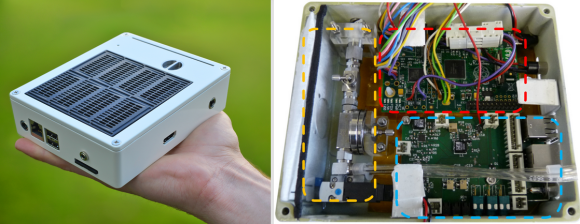Looking for a new way to power your Raspberry Pi? The raspberryHy project aims to develop a small fuel cell designed for powering the credit card sized computer. It adds a proton exchange membrane (PEM) fuel cell, a battery, and custom control electronics to the Pi.
The system takes hydrogen in from a compressed hydrogen cartridge and feeds it through a regulator. This passes the hydrogen into the PEM fuel cell at the correct pressure, and creates a potential. The control electronics boost that voltage up to the 5 V required on the Pi’s USB port. There’s also an electronically controlled purge valve which periodically exhausts the fuel cell.
There’s a few reasons you might want to run your Pi with hydrogen. Run time of the fuel cell is limited only by the amount of hydrogen you can store. In theory, you could connect a large cylinder for very long run times. Combined with a battery, this could be quite useful for running Pis in remote locations, or for long-term backup power. The raspberryHy will be presented at Hannover Fair 2014 this month.













